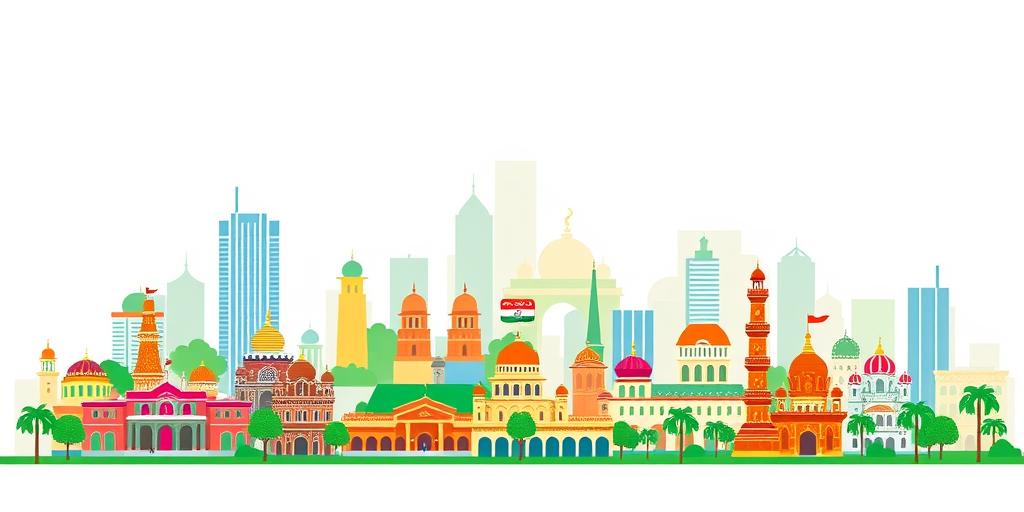The Rise of Tier-2 Cities: India’s New Business Hotspots
India’s economic landscape is undergoing a significant transformation, with Tier-2 cities emerging as vibrant centers of business activity. These cities, characterized by populations between 200,000 and 1 million, are rapidly attracting investment, fostering innovation, and driving economic growth. This article explores the factors contributing to this rise and the opportunities they present for businesses and investors.
What are Tier-2 Cities?
Tier-2 cities in India represent a sweet spot between the saturated markets of Tier-1 metropolises and the underdeveloped infrastructure of smaller towns. They offer a unique blend of affordability, skilled labor, and growing consumer markets, making them attractive destinations for businesses seeking expansion and diversification.
Some prominent examples of Tier-2 cities in India include:
- Jaipur, Rajasthan: A hub for tourism, textiles, and manufacturing.
- Lucknow, Uttar Pradesh: A growing center for IT, education, and healthcare.
- Chandigarh, Punjab/Haryana: Known for its high quality of life and strong industrial base.
- Kochi, Kerala: A major port city and a hub for IT, shipping, and tourism.
- Indore, Madhya Pradesh: A commercial hub with a strong presence in manufacturing and food processing.
Factors Driving the Growth of Tier-2 Cities
Several key factors are fueling the rise of Tier-2 cities as business hotspots:
- Lower Costs: Land, labor, and operational costs are significantly lower in Tier-2 cities compared to Tier-1 metropolises. This allows businesses to reduce expenses and increase profitability.
- Availability of Skilled Labor: Tier-2 cities boast a growing pool of skilled labor, particularly in fields like IT, engineering, and manufacturing. This is due to the presence of reputable educational institutions and vocational training centers.
- Improved Infrastructure: Government initiatives and private investment have led to significant improvements in infrastructure, including transportation, communication, and power supply. This enhances the ease of doing business in these cities.
- Growing Consumer Markets: Tier-2 cities are witnessing a surge in consumer spending, driven by rising incomes and changing lifestyles. This presents a significant opportunity for businesses catering to diverse consumer needs.
- Government Support: The government is actively promoting investment in Tier-2 cities through various incentives and policies. This includes tax breaks, subsidies, and infrastructure development projects.
Opportunities for Businesses and Investors
The rise of Tier-2 cities presents a wide range of opportunities for businesses and investors:
- Manufacturing: Tier-2 cities offer a conducive environment for manufacturing industries, with lower costs, access to skilled labor, and improving infrastructure.
- IT and ITES: Many Tier-2 cities are emerging as IT hubs, attracting software development companies, BPOs, and other IT-enabled service providers.
- Retail and E-commerce: The growing consumer markets in Tier-2 cities offer significant opportunities for retail businesses and e-commerce companies.
- Healthcare: The demand for quality healthcare services is increasing in Tier-2 cities, creating opportunities for hospitals, clinics, and diagnostic centers.
- Education: Tier-2 cities are witnessing a growing demand for quality education, creating opportunities for schools, colleges, and coaching centers.
Challenges and Considerations
While Tier-2 cities offer numerous advantages, businesses and investors should also be aware of the challenges and considerations:
- Infrastructure Gaps: Despite improvements, infrastructure gaps still exist in some Tier-2 cities, particularly in terms of transportation and connectivity.
- Regulatory Hurdles: Navigating the regulatory landscape can be challenging, as local regulations may vary and compliance procedures may be complex.
- Talent Retention: Attracting and retaining talent can be a challenge, as some professionals may prefer to work in larger metropolitan areas.
- Market Awareness: Businesses need to conduct thorough market research to understand local consumer preferences and tailor their offerings accordingly.
Conclusion
The rise of Tier-2 cities is reshaping India’s economic landscape, creating new opportunities for businesses and investors. By understanding the factors driving this growth and addressing the challenges, businesses can capitalize on the immense potential of these emerging hotspots. As these cities continue to develop and mature, they are poised to play an increasingly important role in India’s economic future. Investing in Tier-2 cities is not just a smart business strategy; it is an investment in the future of India.
